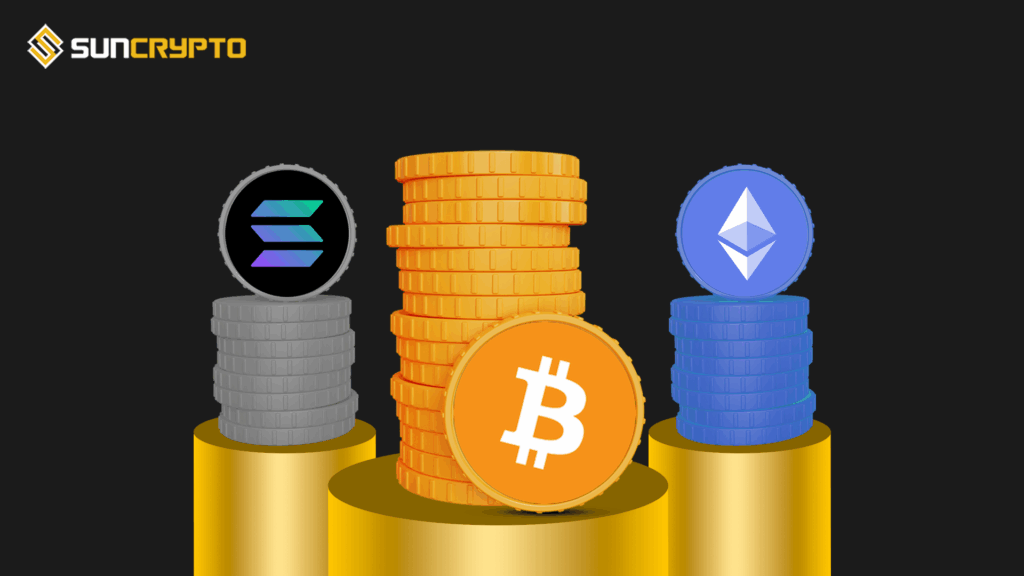Crypto staking is a fundamental mechanism in the world of decentralized finance that allows cryptocurrency holders to earn rewards by participating in the security and operation of a blockchain network. Often compared to earning interest in a traditional savings account, staking is a powerful way for long-term investors (or “HODLers”) to generate passive income from their idle digital assets.
The Core Concept: Proof-of-Stake (PoS)
Crypto Staking is an integral part of blockchains that use the Proof-of-Stake (PoS) consensus mechanism. This mechanism is a modern, energy-efficient alternative to the older Proof-of-Work (PoW) system used by Bitcoin.
How PoS Works:
- Validators: Instead of miners competing to solve complex mathematical problems (as in PoW), the PoS system relies on “validators” to verify and add new transaction blocks to the blockchain.
- The “Stake”: To become a validator, a user must “stake” (lock up) a specific amount of the network’s native cryptocurrency as collateral in a smart contract. This is their financial commitment, or “skin in the game.“
- Selection: The PoS protocol randomly selects a validator to propose and validate the next block. The more coins a validator has staked, the higher their chance of being selected.
- Rewards & Penalties:
- Rewards: For successfully verifying a block, the validator earns a reward, typically in the form of newly minted cryptocurrency or transaction fees.
- Slashing: If a validator acts dishonestly (e.g., trying to validate fraudulent transactions) or fails to maintain their node (going offline), the protocol enforces a penalty called slashing, where a portion of their staked crypto is confiscated. This mechanism incentivizes honest participation.
In essence, by staking, you are contributing capital to secure the network, and the network rewards you for that service.
How to participate in Crypto Staking?
Before you begin, ensure you have completed your KYC and have the cryptocurrency you wish to stake (e.g., MATIC, ADA) already deposited into your SunCrypto wallet.
Step 1: Navigate to the Staking Section
- Open the SunCrypto Mobile App.
- Look for the dedicated ‘Staking’ or ‘Earn’ section, usually found on the bottom navigation bar or the main dashboard.
Step 2: Choose Your Crypto Asset
- Browse the list of available cryptocurrencies that SunCrypto supports for staking (e.g., MATIC, ADA, DOT, etc.).
- Select the asset you currently hold and wish to stake.
Step 3: Review Staking Details
- Once you select a coin, you will see a detailed screen showing the staking parameters:
- APY (Annual Percentage Yield): This is the estimated annual return rate.
- Minimum Staking Amount: The minimum number of coins required to start staking.
- Lock-up Period (if applicable): Note if your funds will be locked for a specific duration (some platforms offer flexible options, but others require a commitment).
Step 4: Enter the Staking Amount
- Enter the exact amount of the coin you wish to lock up for staking. Ensure this amount is equal to or greater than the minimum required amount.
- Review the terms and conditions, especially regarding the lock-up and unbonding periods.
Step 5: Confirm and Start Earning
- Tap the ‘Stake’ or ‘Confirm’ button.
- You will need to enter your MPIN to authorize the transaction.
- Once confirmed, your selected assets are moved from your main wallet to the staking pool, and you will immediately start accruing rewards.
Risks and Rewards of Crypto Staking.
Staking offers compelling benefits but is not without its risks. Understanding the trade-offs is essential.
|
Rewards of Staking |
| Earn continuous rewards on your holdings without actively trading your assets, allowing your capital to grow automatically. |
| You help secure and decentralize the blockchain by validating transactions, thereby aligning your financial incentives with the network’s long-term success and stability. |
| Rewards are often automatically re-staked (compounded), allowing your earnings to generate further rewards over time, accelerating your overall growth. |
| Staking through centralized exchanges or decentralized pools requires minimal technical skill or large amounts of capital, making it accessible to most users. |
|
Risks of Staking |
| If the market value of your staked token drops faster or more significantly than the rate at which you earn staking rewards, your overall investment value will decrease. |
| Most staking mechanisms require a lock-up period (ranging from days to weeks) during which your assets are frozen. You cannot sell or trade these assets, even if the token’s price crashes sharply. |
| If you stake independently or delegate your tokens to a validator who is found to be malicious or faulty (e.g., goes offline or double-signs transactions), you can lose (be “slashed”) a portion of your staked capital as a penalty. |
| Choosing an unknown, unreliable, or insecure staking platform or validator node increases the risk of loss, reduced rewards, or potential hacks and theft of your staked funds. |
The Rise of Liquid Crypto Staking
A recent innovation, Liquid Staking, aims to solve the liquidity risk. When you stake your crypto on a liquid staking platform (like Lido), you receive a derivative token (e.g., stETH for staked ETH) in return.
- This derivative token represents your staked asset plus your earned rewards.
- You can then use this token in other DeFi protocols for lending or trading, maintaining liquidity while your original asset remains staked and earning rewards.
Disclaimer: Crypto products & NFTs are unregulated and can be highly risky. There may be no regulatory recourse for any loss from such transactions.

